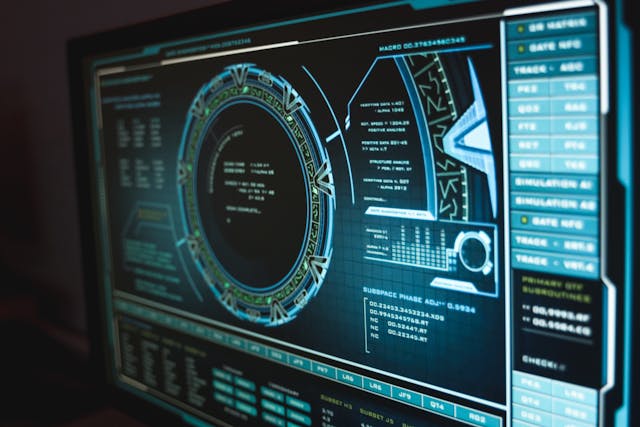Management Information Systems are the study of people, technology, organizations, and their relationships. MIS specialists assist businesses in getting the most out of their investments. MIS is a people-focused industry with a focus on providing services using technology.
Management information system (MIS) is used for decision-making and coordination. It is also used to control, analyze, and visualize information inside an organization.
MIS is a tool for gathering, organizing, processing, and analyzing business data. This produces insight that can be used to make decisions. A company’s MIS is more sophisticated if its operations are complicated.
Businesses can utilize management information systems to increase the efficiency of report generation and data analysis. They can do this by gathering data from the staff members and keeping it in a uniform and accessible way.
The most recent MIS operations make use of the cloud and are able to track productivity. They respond to data-related questions and highlight data that match current requirements. Depending on the size of the firm, it might have an MIS department with a group of skilled IT specialists.
These specialists handle its complicated data management requirements. Many of the company’s other employees may be able to view and use the MIS data in addition to the decision-makers.
Objectives of Management Information Systems (MIS)
In this training, you will learn about the objectives of the management information systems.
You will better understand the main goals of management information systems thanks to this training.
MIS, as its name suggests, is a system that controls all of an organization’s data and information. Planning, controlling, and overseeing an organization’s operations are all included in management. It aids management in operating, regulating, and planning.
Its main goal is to make information available to all corporate resources. This enables them to act immediately and without delay.
It is a system that collects data from an organization’s internal sources. It distributes information to the managers to help them with the decision-making.
Data storage
Information or processed data must be kept on hand for future use.
Data retrieval
When various users need it, the data should be accessed from storage devices.
Data propagation
Users of the corporate network should receive data on a regular basis.
MIS manages management functions to give management quick access to information. The method for making judgments is very efficient.
It combines the corporate organizational structure and business processes to enhance enterprise control. It optimizes the competitive advantage potential of the information system.
Graphical reports
Gives a sense of how the organization’s various resources are performing.
Controlling the organization
It controls the organization by supplying the most recent information and historical data.
Standard and budgeted performance
Management information systems highlight deviations that can be fixed by taking corrective action. This is by comparing actual performance to standards and budgets.
The ability of the organization’s management to use opportunities is informed by such systems.
The manager’s decision-making plays the main role. It lets management people make decisions based on the information being processed.
Only input data change, it is an acceptable repeat to support forms of decision-making. The automation capabilities of MIS’s can improve your company’s performance.
This is the mechanism that provides managers with the necessary data. It equips them with the tools they need to make decisions. Managers use it as a tool to pinpoint the problems they are facing. Managers can comprehend problems and develop solutions with the use of MIS.
MIS can collect and store data from departments, producing reports that your staff can use. MIS enhances business performance and supports decision-making
Benefits of MIS in Business
The benefits of management information systems in business can include the following:
It generates analytical reports
MIS organizes and analyzes data and uses it to generate informative reports. With these reports, the organization’s management can check its performance. It also identifies new business opportunities. MIS can form plans to improve an organization’s processes and increase its production efficiency.
It allows real-time performance reports
By receiving performance reports in real time, the organization becomes dynamic in its operations. Its employees may be able to discover and respond to opportunities more. They may also detect potential threats and find appropriate solutions to avoid them. Additionally, work productivity improves when everyone is better informed about business operations.
It compares projections and performances
Organizations set business goals and make business and financial forecasts. For that, they must compare them with actual performances. An MIS facilitates performance reviews and accurate comparisons with the projections. That can enable the management to make better business decisions.
It improves internal communication
It can ease communication between different employees and departments of the organization. They can share relevant and timely business information, particularly about interdepartmental work. That can prevent work delays or misuse of resources due to any misunderstanding.
It aids the work allocation process
MIS assists management to make better decisions on the allocation of staff and resources. They can review the performance reports of employees and identify the best performer. They can transfer the best employees to high-performing departments. This enhances work productivity and increases business results. They can also arrange for training programs to improve employee performance.
Types of Management Information Systems
Here are some that many companies use for their business operations. These management information systems address the information requirements of different organizations
Decision support system
A decision support system is a type of business intelligence system. It collects valuable industry information from surveys, research studies, and user behavior analyses. An organization’s decision-makers review this data and use it to make accurate decisions.
These decisions can lead to better business development in the future. If they want to buy the best raw materials at low prices, they refer to the decision support system. They can compare different suppliers and compile a list of those with lower prices.
Inventory control system
Inventory is concerned with the storage of raw materials for production purposes. It also ensures the storage of manufactured goods ready for sale. The success of every product-based business depends on the proper management of its inventory.
The inventory control system facilitates this process. It can help organizations keep track of their purchases and stored raw materials. Conversely, you can arrange raw materials according to type, expiry date, use, and price.
MIS can track the total number of products manufactured in a given time and the warehousing as well as track the storage of finished goods, sales turnover, refunds, and reorders.
Sales and marketing systems
Organizations use sales and marketing systems to stay informed about product development. It assists in sales distribution channels, marketing strategies, marketing costs, and product pricing.
They can track existing and new clients and sales for a given timeframe and specific region. Based on these, they can also make future sales predictions.
Human resource system
An organization’s employees are an important resource that helps a firm to stay competitive. The human resource system assists the HR department to store relevant data on employees. This makes it easier to track their skills, job positions, duties, and work performances. salaries, bonuses, and other details.
It can also enable managers to communicate with the employees. Additionally, it can aid them in undertaking new recruitment drives by storing information. It also short-lists the ones with the desired skills and schedules interviews.
Transaction processing system
A transaction process system is invaluable for collecting, storing, and modifying data. It also retrieves large amounts of business transactional data. It can undertake transaction processing in real-time and maintain it for years.
Organizations calculate and track their expenses and profits. This is a result of having ready access to all their transactional data. They can also keep track of their orders, reorders, canceled orders, and refunds. The payroll systems are an example of a transaction processing system.
Enterprise resource planning system
Enterprise resource planning system assists product-based organizations to function It acts as an organization’s main information center. It makes use of a central database to collect, store, process, update, and share information. This allows its management to access, standardize and synchronize all the relevant information.
They can use this system to develop new products and divide raw materials. and human resources. It also helps restock the inventory improve the manufacturing process and boost productivity.
Executive information system
Top executives and managers use an executive information system to view existing data. This data stored in a database is relevant for executive decision-making. The system has a simple interface and is easy to use. Executive information system presents data in a graphical form. This helps users analyze data and predict market trends well.



